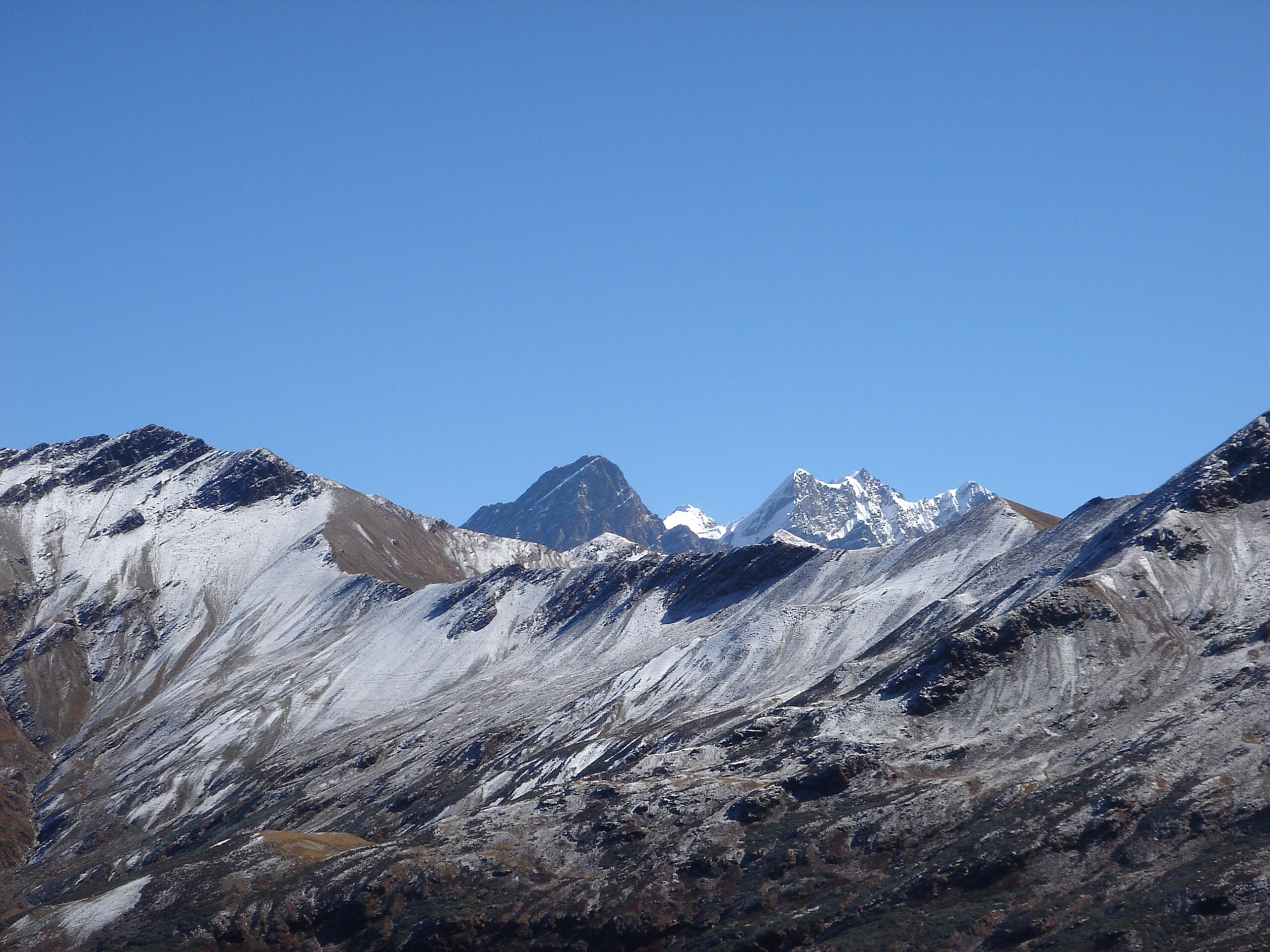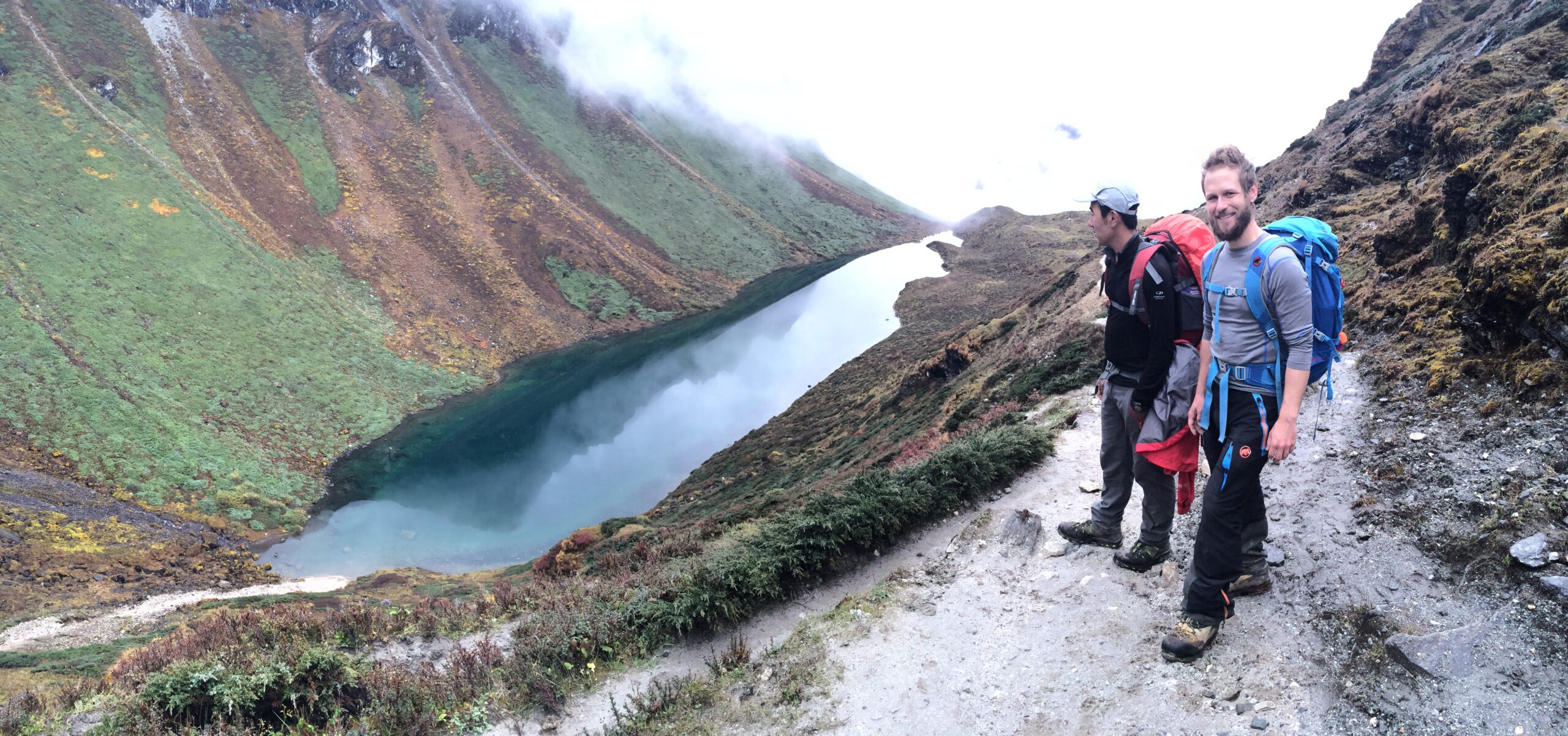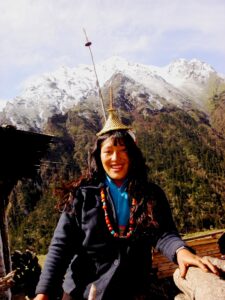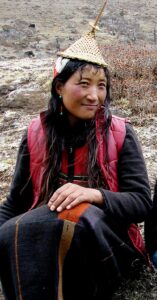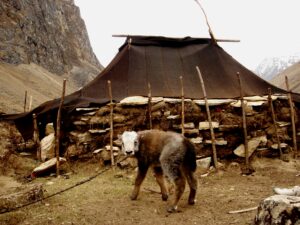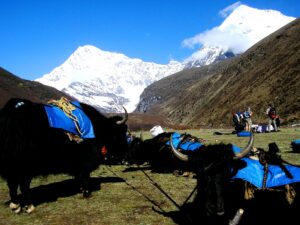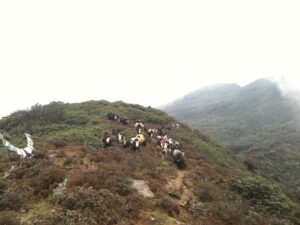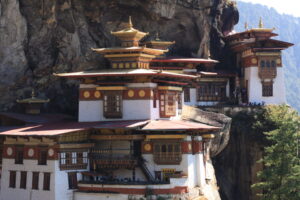Description
Group Size: Maximum 15 persons, Minimum 2 person
Tour Grading: Challenging
Activity: Trekking, Cultural and Wellness
Sights: Tiger’s Nest monastery, Punakha Dzong, Paro Dzong, Thimphu Centenary Market, Kuenselphordang, Painting School of Arts and Crafts, Textile Museum, National Museum, Madman Temple, Soi Thangthanka, Jangothang, Lingtsi, Chebisa, Shomuthang, Robluthang, Lemithang, Laya, Koena, Gasa.
Best Season: March, April, May, August, September, October, and November
Trip Route: Paro – Thimphu – Punakha – Phobjikha – Bumthang – Punakha – Paro – Soi Thangthanka – Jangothang – Lingtsi – Chebisa – Shomuthang – Robluthang – Lemithang – Laya – Koena – Gasa.
Trek: The Laya Gasa Trek is considered one of the most scenic long-distance treks in Bhutan. Running along the border with Tibet, the trek offers amazing views of some of the most pristine and unspoiled landscapes in Bhutan. The trek begins at Drukgyel in Paro and takes you through gorgeous alpine meadows and high mountain passes with awe-inspiring views of Mount Jomolhari, Jichu Drake, and Tsherimgang. You will trek through the remote semi-nomadic village of Laya, with its unique culture, traditions, and appearance.
- The only capital in the world without traffic lights
- Buddha Dordenma (Kuenselphodrang)
- Bhutan Postal Museum, Evolution of Communication Systems in Bhutan
- Stunning views from the passes of Pele la and Yotong la
- Chimi Lhakhang, the temple of fertility
- Punakha Dzong: Lavender, full bloom (seasonal)
- Tiger’s Nest: an exhilarating task of 2 hours of climbing and another 1.5 hours of retrieving steps
- Lingshi Dzong, Gasa Dzong, and Hot Spring Therapy (wellness)
Day 1: Arrive in Paro
Upon arrival at Paro International Airport, you are met and transferred to the hotel. Depending on your arrival time, you may be able to see a few places in the late afternoon or evening. Visit Paro Rinphung Dzong and take a short familiarization tour of Paro town.
Overnight in the hotel.
Day 2: Paro Valley Sightseeing
In the morning, drive to the north end of the valley, and visit the ruined ramparts of Drugyal Dzong. Visit the 7th-century Kichu temple and National Museum in the afternoon, transfer to Bondey village, and take a short walk through the village to the cliff-hanging monastery of Dzongdrakha, spectacularly situated with views of large country houses.
Overnight in the hotel.
Day 3: Hike to The Tiger's Nest
Today's hike to the Tiger's Nest is to prepare and acclimate. Prepare to walk up to the famous monastery in Bhutan, which has recently been listed as one of the ten holiest places in the world. This is one of the highlights of the trip. It’s perched on a high cliff, 900 meters above the floor of Paro Valley. It is named Tiger’s Nest because Guru Rimpoche is said to have flown to the site on the back of a tigress in the 8th century. This monastery is the holiest in Bhutan. The five-hour walk to the monastery, involving some intense but rewarding climbing over 900 meters, cleanses both the soul and the body.
Overnight in the hotel.
Day 4 Trek starts from Shana to Soi Thangthangka (Approx. 22km. 8-hour trek, 480m ascent, 50m descent.
From Paro, we drive north to Drugyal Dzong and then continue driving along the new farm road to Shana Zam (2850m), which takes about 2 hours. After loading the pack animals—ponies—with your luggage and trekking gear and supplies, we begin a 3 to 4-hour trek through Jigme Dorji Wangchuk National Park. Accompanying the group are the horseman, ponies, a guide, a cook, and assistants.
Trek to Soi Thangthangka: approx. Continue up through the valley, following the Paro River, which gradually narrows as the trail leads higher, winding up and down through a thick, lush forest of oak, pine, cider, and juniper, as we get closer to our camp for the night. Camp at around an altitude of 3600m. Overnight in a tent.
Day 5 Soi Thangthangka to Jangothang (Approx. 16 km 4 hours)
We continue following the Paro River as the valley begins to widen. A few yak-herding villages are based in this area. Today is not a long day but because of altitude gain, the pace is slower. There is a nice little trekker hut that is used by trekkers for dining and a fireplace. Camp at Jangothang (4,080m) below a ruined fortress with Mt. Jumolhari seemingly nearby.
Overnight in a tent.
Day 6 Jangothang (halt)
Jangothang is one of the most spectacular campsite sites in the entire Himalayas. A chain of snow peaks from the eastern side of Paro River, which is a clear little brook here, and there are yak herder’s villages and trout-filled lakes to visit. You may hike towards the glaciers of Chomolhari, or the Tshophu lakes for magnificent views or fishing. Of course, you can also opt to stay at camp, take in the views, and rest for the challenging day ahead.
Day 7 Trek to Lingtsi (Approx. 18 km 7 hours)
Jangothang is one of the most spectacular campsite sites in the entire Himalayas. A chain of snow peaks from the eastern side of Paro River, which is a clear little brook here, and there are yak herder’s villages and trout-filled lakes to visit. You may hike towards the glaciers of Chomolhari, or the Tshophu lakes for magnificent views or fishing. Of course, you can also opt to stay at camp, take in the views, and rest for the challenging day ahead.
Overnight in a tent.
Day 8 Trek to Chebisa (Approx. 10 km 5 hours)
Today is one of the shortest walking days and you can take it easy. In the morning you may hike to the Dzong (local administrative office and monastic center), descend to visit the Lingshi village, and then continue the trek to Chebisa. Pass through picturesque Goyul village with unusual clustered stone houses at an altitude of 3870m and arrive at a spectacular Shangrila-like setting of Chebisa village. Your campsite is near the village, opposite the river at 3880m.
Overnight in a tent.
Day 9 Trek to Shomuthang (Approx. 17 km 7 hours)
From the village, you begin by climbing uphill on a steep slope. Several large herds of blue sheep live near here. You may also see bearded vultures and griffons. You will see a few people herding the yaks. The trail begins to level and traverses to Gobu-la at 4440m (a ridge-crossing). After Gobu la you make a few ascend and descend crossing ridges and valleys. The campsite is on a bench above a river which is a tributary of the Nochu at 4220m.
Overnight in a tent.
Day 10 Trek to Robluthang (Approx. 18 km 7 hours)
As the walk is a little strenuous, it is advisable to start a little early. After crossing the Jerela pass (4750m) you come down to Tsharijathang Valley where you can normally see herds of Takins. The valley has been declared a sanctuary for Takins. En route, you may able to see Mt. Gangchen Ta (6840m) Kangbum (6526m) Tsherim Kang, and the top of Jumolhari. Your campsite may be in Tsharijathang or a short walk further to Robluthang at 4160m.
Overnight in a tent.
Day 11 Trek to Limithang (Approx. 19 km 7 hours)
Another long and tough day, crossing the Shingela Pass, the highest pass on the trek. Follow the stream for a while, and then climb onto the moraine at 4460m. After about 5 hours from the campsite, you arrive at Singe la pass at 5005m, from where you can see the snow-covered Gangchenta (literally meaning, tiger mountain) that fills the horizon to the north. Descent from the pass follows the moraine into another glacial valley. Lovely campsite in big meadows by the river at Lemithang at 4140m.
Overnight in a tent.
Day 12 Trek to Laya (Approx. 10 km 5 hours)
After about 4 hours of trek, you arrive near Laya. There are two trails just before Laya. One leads to the upper Laya and you will be able to see the village and fields from the top. The lower path leads to directly the village. The campsite is near the community primary school at 3840m. Ganchenta and Masangang (7165m) dominate the skyline. In the afternoon wander around Laya village. Tonight you may be watching dances and singing by the local population, who is curious to see you.
Overnight in a tent.
Day 13 Laya (halt)
The extra day in Laya is to get some rest explore and meet the locals. Laya is a largely isolated community of roughly 1000 people, who have their language, customs, and distinct dress. The women keep their hair long, (unusual in Bhutan where most women have close-cropped hair) and wear conical bamboo hats with a spike at the top. They dress in black Yak wool jackets and skirts with some colored stripes. Their jewelry includes an array of silver teaspoons at the back. The village is spread out over the hillside, close to the Tibetan border at an altitude of 3700m, and is one of the highest villages in Bhutan.
Day 14 Trek to Koena (Approx. 19 km 7 hours)
From the village, the trail drops near the river, where there is an army camp. It crosses the ridge at 3390m, descends, and makes a serious climb to Kohi Lapcha at 3300m. Koina campsite at 3050m is a muddy bog near the stream, but you do have to manage for a night because there are no good camping spots in the area.
Overnight in a tent.
Day 15 Punakha - trek ends(Approx. 19 km 7 hours)
From the campsite, make a gradual climb and descend through the forest of fir and arrive at Babela pass at 3900m., marked by a stone cairn and few prayer flags. From there it mostly descends through fir and then through bamboo forests as Gasa Dzong begins to appear on the other side. You will probably be camping in the field near the town. But if we arrive early and if the situation favors, you will camp near the hot spring, which is 1-2hrs further downhill at 2240m. Meet our transport and drive toward Punakha. The road winds through the rolling hills and passes through the pine and oak forests, villages, and wheat fields. After Goen Damji (2430m) village, it is downhill through rich subtropical jungles to Tashithang and then to Punakha. The entire journey could take between 3-6hrs depending on the road condition.
Overnight in a hotel.
Day 16 Punakha & Wangdue Valley Tour
Punakha was once the winter capital of Bhutan, partly because of its warm and pleasant winters at a relatively low altitude of 1200m; allowing for the production of two rice crops each year. Visit the architectural wonder of the 17th-century Punakha Dzong on the confluence of the Pho Chu & Mo Chu rivers. Take a short hike to visit the beautiful Khamsum Yuelley temple. Later drive to Wangdiphodrang and visit its town. In the evening, take a half-hour walk through the fields and a village visit Chimi Lhakhang originally built by Drukpa Kuenley.
Overnight in the hotel.
Day 17 Punakha to Thimphu
In the morning, drive on a spectacular road over the magnificent Dochu La Pass (3,050m), with its fluttering prayer flags and chortens. The pass offers astounding views of the Bhutanese Himalayas on a clear day. At the pass, we stop for tea and to enjoy the views. If the weather is clear, you can see Gasa Dzong in the distance. This afternoon, we will take a short tour of Thimphu to familiarize ourselves. Among others, visit the great Tashicho Dzong.
Overnight in the hotel.
Day 18 Thimphu Valley Sightseeing
A full-day tour of Bhutan’s capital city, which may include visits to the late king’s memorial chorten, the nunnery at Zilukha, the traditional painting and craft school, the national library, the indigenous hospital, the folk heritage museum, the textile museum, the hand-made paper factory, Zangdopelri temple, the handicraft centers, local Farmer’s market, and maybe see archery match in progress. Farewell dinner & Overnight in a hotel.
Day 19 Departure
After early morning breakfast depending upon flight schedule drive to Paro International Airport for departure to onward destination and bid farewell.
~ TASHI DELEK~

